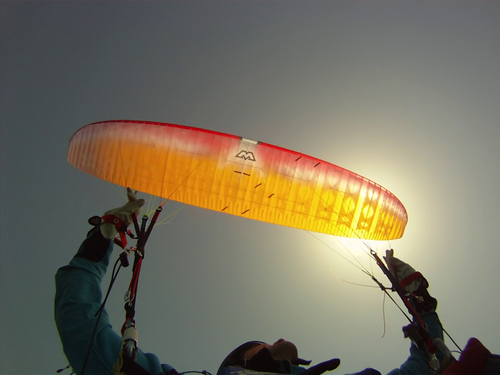Eden 5 28 |
|||||||||||||||||||||||||||||||||||||||||||||||||||||||||||||||||||||||||||||||||||||||||||||||||||||||||||||||||||||||||


|
|||||||||||||||||||||||||||||||||||||||||||||||||||||||||||||||||||||||||||||||||||||||||||||||||||||||||||||||||||||||||
Instability rating |
|||||||||||||||||||||||||||||||||||||||||||||||||||||||||||||||||||||||||||||||||||||||||||||||||||||||||||||||||||||||||
|
|||||||||||||||||||||||||||||||||||||||||||||||||||||||||||||||||||||||||||||||||||||||||||||||||||||||||||||||||||||||||
Glider characteristics |
|||||||||||||||||||||||||||||||||||||||||||||||||||||||||||||||||||||||||||||||||||||||||||||||||||||||||||||||||||||||||
|
Launch preparations: average
launch characteristics: dynamic, delayed climb, needs gentle guidance, overshoots, pronounced braking required, accelerates before zenith, tends to stall during control check
asymmetric collapse: canopy colllapses at high angle to leading edge, moderate dynamics, total course change 90-180°, (1), delayed course change, marked forward pitching 60-75°, (4), high height loss 40-49 m, (3), moderate sink velocity 15-19 m/s, (2), G-Force 2,5- 2,9 G, (2)
Frontal collapse: canopy collapses with high total collapse aera, moderate pitch backwards 30-45°, moderate pitch forwards 30-45°, moderate dynamics, course change 90-180°, (3), delayed recovery, asymmetric recovery, with tendency to cravat, (4), very high height loss >50 m, (4), low sink velocity 10-14 m/s, (1)
Spiral dives: rapid sink velocity increase, Moderate G-Force 3,5- 4.0 G, (2), Sink velocity after 720° <18 m/s, (3), High maximum sink velocity < 22 m/s, (3), sink velocity increase < 3 m/s on brake release, (1), Course change 180-360° after spiral exit, (2), moderate height loss during recovery 30-60 m, (2)
B-Stall: normal force required, moderate pitch backwards 15-30°, marked pitch forwards 30-45°, stable sink phase, no tendency to deform, immediate return to normal airspeed, 8-10 m/s, height loss on recovery 20-40 m
big ears: simple initiation, stable flight phase, pilot action required, Vsink unaccelerated < 2,5 m/s, Vsink accelerated 3-3,5 m/s, Vunaccelerated 3-5 km/h less than trimspeed, Vaccelerated >8 km/h faster than trimspeed |
|||||||||||||||||||||||||||||||||||||||||||||||||||||||||||||||||||||||||||||||||||||||||||||||||||||||||||||||||||||||||
Notes |
|||||||||||||||||||||||||||||||||||||||||||||||||||||||||||||||||||||||||||||||||||||||||||||||||||||||||||||||||||||||||
|
Launch characteristic: Both Gradients Nevada and Mac Paras Eden 5 were more difficult to launch. At the beginning of inflation both gliders tend to hang back a little requiring careful pressure from the pilot on the risers. At the end of the climb, both gliders tend to accelerate and surprise the pilot with needing a good jab on the brakes to stop them at the zenith and stabilise there. Too much brake brings the canopy down quickly, but once our testers had gotten used to this behaviour, safe launching was no real problem. Asymmetric Collapse: Mac Paras Eden 5 and Gradients Nevada react similarly to assymetric collapses. Compared with other gliders in this class both gliders slow on collapsing and course change is delayed. The rate of course change and pitch forward angle begin to increase markedly after about 90°, moreso with the Eden 5 than the Nevada. This type of behaviour gives a pilot more timeto react and prevent further difficulties but may also lead to a spin or stall if the pilot brakes too early to recover. Front collapses: 40% Moderate pitch back, moderate pitch forward, slight delayed recovery, no course change, low sink rates. Maximum collapse presented by construction: Moderate pitch back, moderate pitch forward. Spiral Dive: The spiral test produced no great surprises.No glider demonstrated tendencies to remain in a stable dive after the brakes had been released to initiate recovery. High end B class gliders do tend to collapse on the outer wingtip when spiralling due to their higher aspect ratios. These small collapses produce sufficient resistance to prevent the gliders accelerating further in the spiral. Here all spirals were flown according to LTF test regulations without using weight shifting. Spirals flown in practice by pilots using weight shifting and stabilising the outer wingtip sufficiently to prevent it collapsing may well lead to further acceleration in the dive and produce a stable spiral dive once the brakes are released to initiate recovery. B-Stall: Stable sink phase, marked pitch forward on exit. Big Ears: Active recovery sometimes necessary. |
|||||||||||||||||||||||||||||||||||||||||||||||||||||||||||||||||||||||||||||||||||||||||||||||||||||||||||||||||||||||||
Rating |
|||||||||||||||||||||||||||||||||||||||||||||||||||||||||||||||||||||||||||||||||||||||||||||||||||||||||||||||||||||||||
|
Safety class 4 This class of paraglider reacts demandingly to one or more of the following manoeuvres: frontal collapse, asymmetric collapse or spiral dive.Demandingly means that the above manoeuvres result in marked dynamic reactions from the glider and/or large height losses. Advanced piloting skills which need to be regularly practised, together with good personal reaction times are required to safely fly this class of gliders. Basic recovery techniques for ending a manoeuvre are not sufficient to maintain control, reduce height loss to a minimum and prevent subsequent critical reactions. Pilots should be able to recognise the onset of the above manoeuvres and be able to prevent or minimise their effects through immediate and precise pilot inputs. Additional experience such as regular ground handling and SIV training is required to safely fly gliders of this class. Special training or pilot skills which exceed standard training may be required for the safe performance of emergency descent techniques. Gliders of this Safety Class are not suitable for beginners, irregular flyers or low-airtime pilots. |
|||||||||||||||||||||||||||||||||||||||||||||||||||||||||||||||||||||||||||||||||||||||||||||||||||||||||||||||||||||||||

